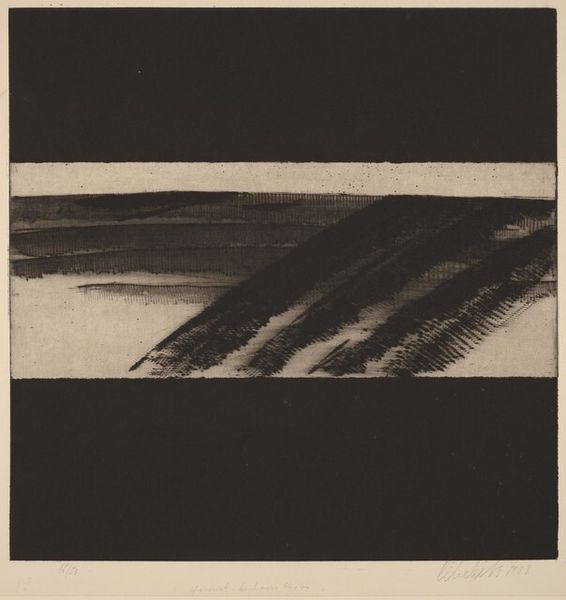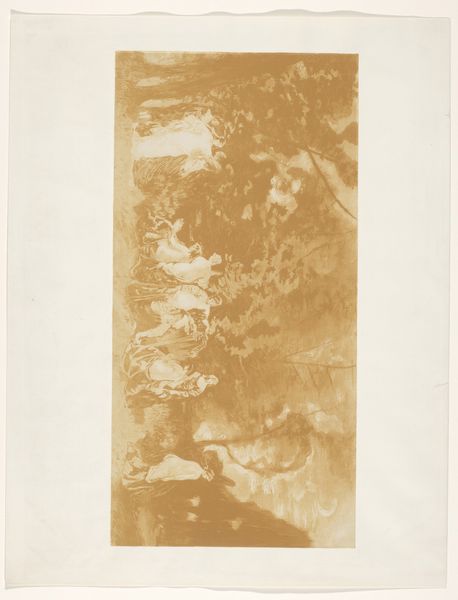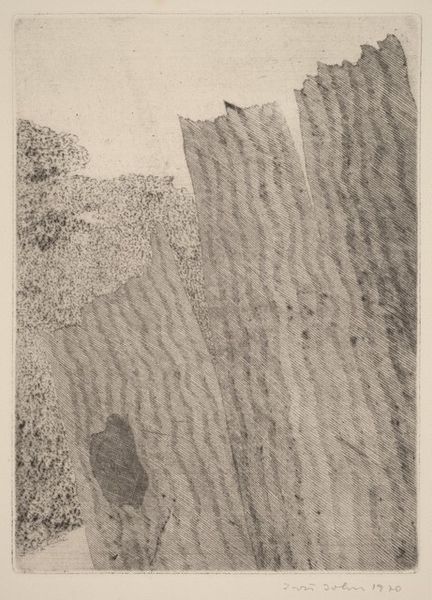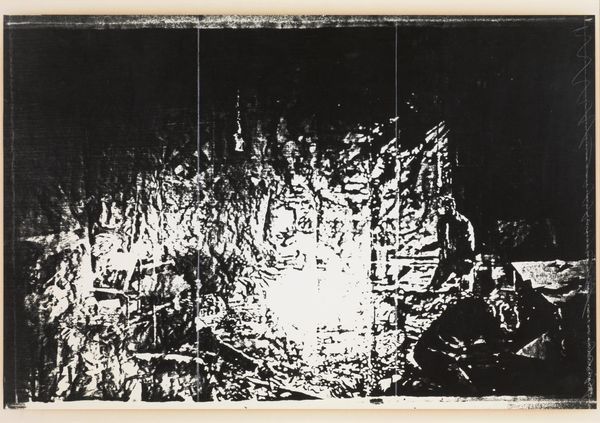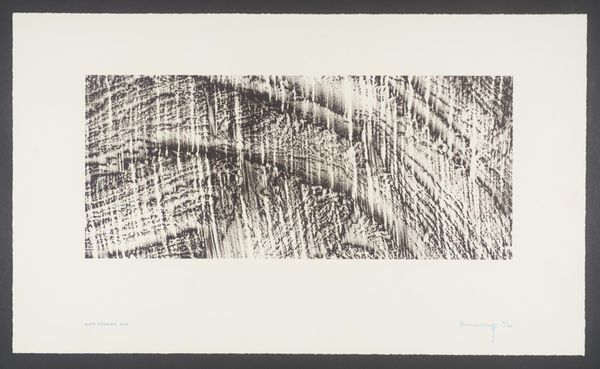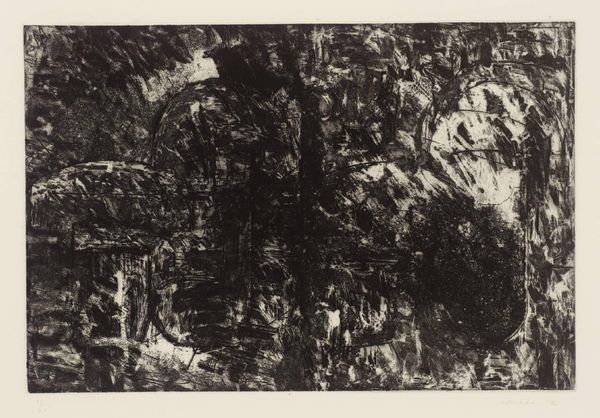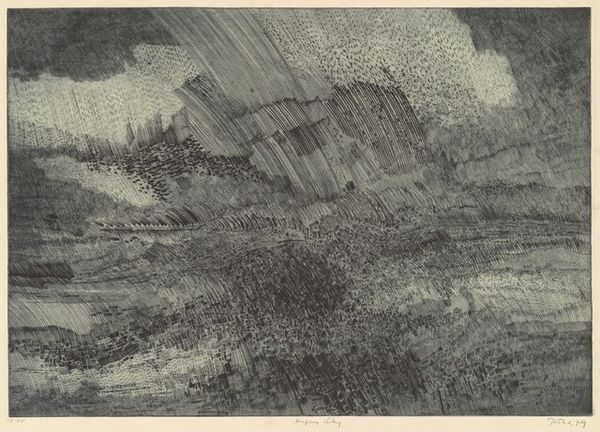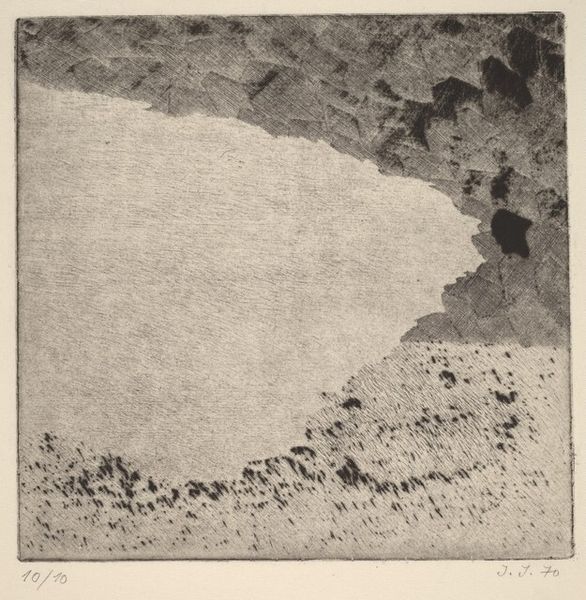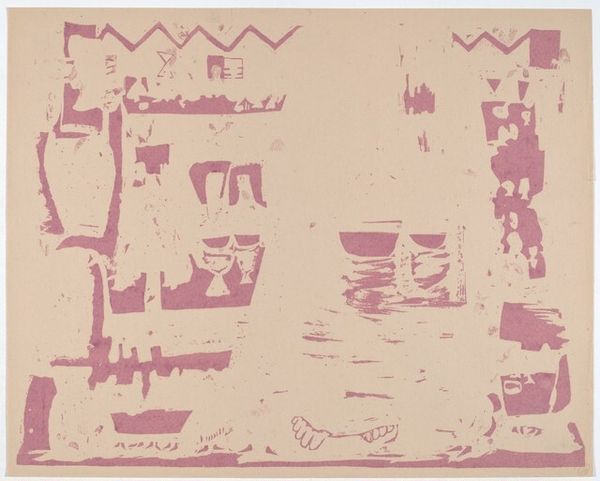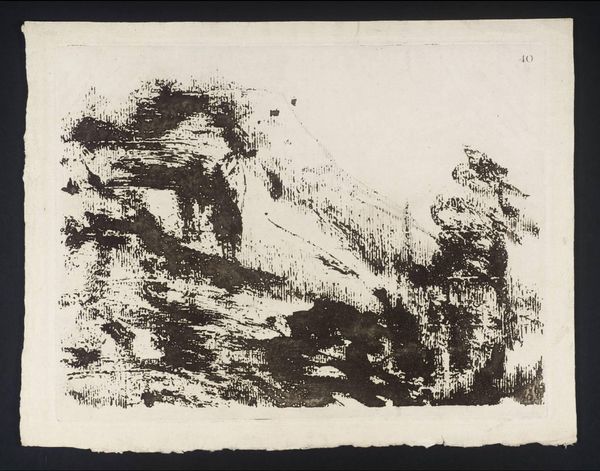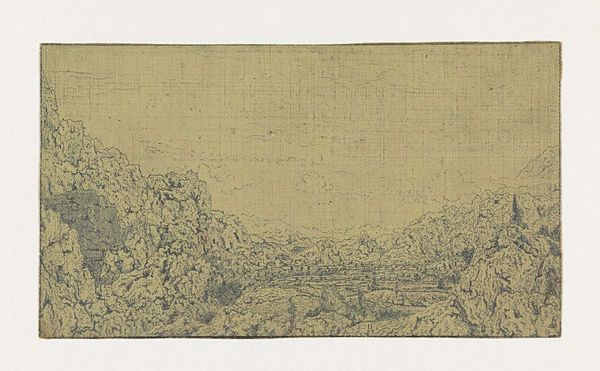
print, linocut, woodblock-print
# print
#
linocut
#
landscape
#
linocut print
#
woodblock-print
#
regionalism
Dimensions: image: 23.5 × 27.94 cm (9 1/4 × 11 in.) sheet: 34.29 × 43.18 cm (13 1/2 × 17 in.)
Copyright: National Gallery of Art: CC0 1.0
Editor: This is Gustave Baumann’s “Bright Angel Trail,” a linocut from 1922. The color is so striking—this intense, almost sunbaked red. It really captures the heat and ruggedness of the landscape, but there's also a quiet beauty. What do you see in this piece? Curator: Well, that red, for me, resonates deeply. Consider what red traditionally symbolizes: lifeblood, courage, but also the harsh realities. Here, it’s not just descriptive. That saturated hue becomes the *feeling* of the Grand Canyon, not merely the visual. Baumann taps into something primordial. Have you ever wondered about the cultural weight a landscape carries? Editor: That's a fascinating way to put it. The “feeling.” So you’re saying this image is more than just a representation of a place, that it carries deeper meaning? Curator: Precisely. Think of the Grand Canyon as a symbol itself: the vastness of time, the power of nature. And Baumann chose linocut, a medium that demands deliberate cuts, each one echoing the slow carving of the canyon itself. What stories do you think it silently carries with it from viewers past? Editor: That's incredible! I never considered the medium itself being symbolic of time. Thinking about it, the choice of linocut highlights those angular rocky forms, something like looking at an aerial shot of a war-torn land. This conversation has really helped me see how artists embed meaning through not just the subject matter, but also through colour and the execution of their chosen medium. Curator: Exactly. An image isn’t just *seen*; it's experienced. Every line, every colour choice, echoes throughout history and lives within our own memory too.
Comments
No comments
Be the first to comment and join the conversation on the ultimate creative platform.
